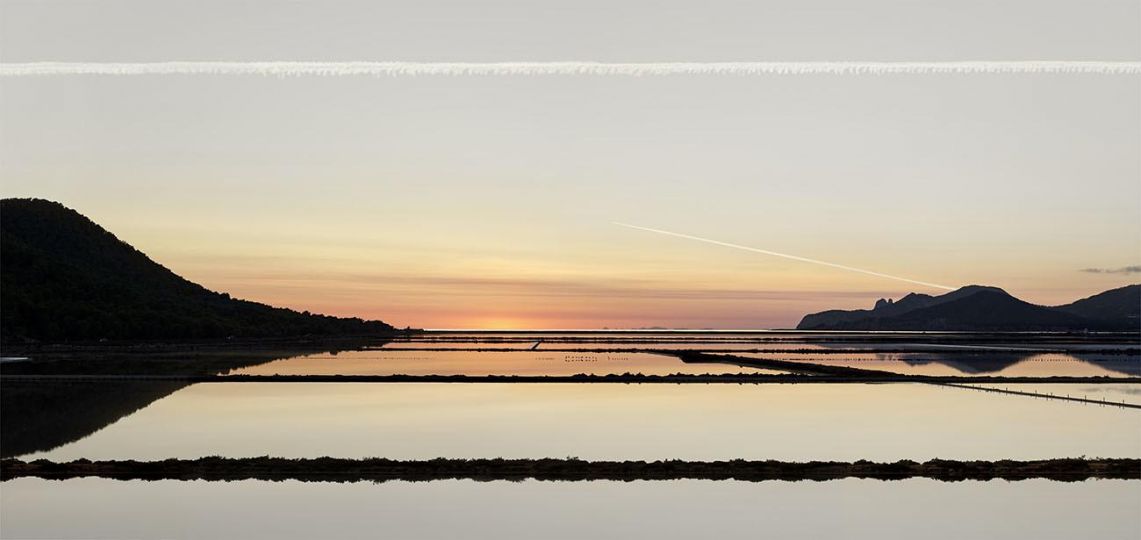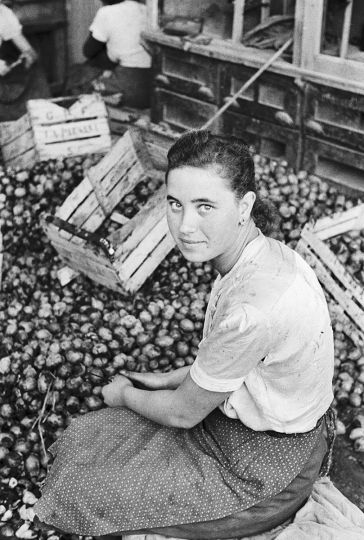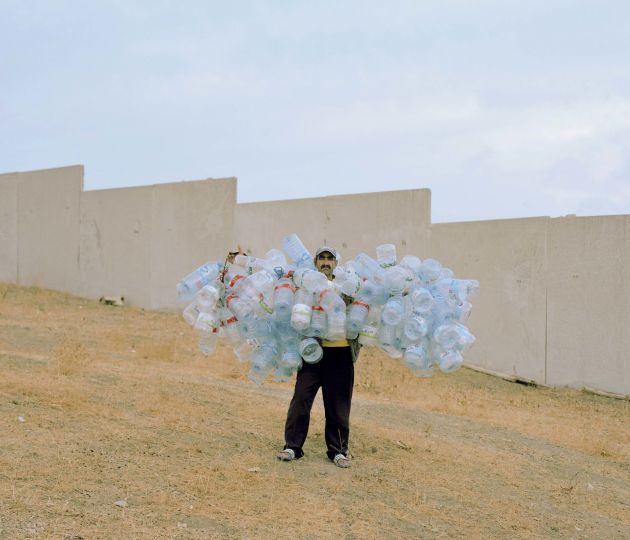It has been two years since the last Foto/industria in Bologna, the Biennial first-ever dedicated to Photography on Industry and Work, which until November 26 presents itself in the playful complexity of its sixth edition. Promoted by Fondazione MAST, it proposes 12 exhibitions: the fil-rouge is The Game Industry in Photography. At first glance, the theme may seem light-hearted, but this is not the case.
Referring to the Dutch historian Johan Huizinga (Homo Ludens, 1938), curator Francesco Zanot suggests that “play is a serious matter and is therefore a complex thing, with multiple levels of interpretation. Because play can be a moment of growth and education, it can provide relaxation and gratification, has a liberatory nature and a universal value (play unites us all). And because the economy, an industry of great importance and tradition, revolves around it: the games industry”.
From children’s plays to amusement parks, from casinos to video games, the games sector has grown in unprecedented proportions and has taken on relevant themes. Each of us, perhaps unconsciously, plays with material objects, with pieces of reality to be recombined as in a kaleidoscope, adapting images to a story, using the game of mirroring or relying on creations supported by augmented reality or artificial intelligence. In short, much of our world can be the object and subject of the game, depending on the points of view, which are multiple and different, as is the case of the authors who have approached this theme, interpreting it according to their own sensitivity, but using a clearly readable language, that of photography.
The camera itself can be part of the game, as in the case of Andreas Gursky in Visual Spaces of Today. According to Urs Stahel, curator of the exhibition at MAST, “The large format that Gursky uses changes the space and asks us to confront the image (even physically). Gursky plays with images of the world staging real things and obtaining different realities from them. The pictures are a symbol of an overwhelming reality, a recreated, seemingly familiar reality that does not lose yet the sense of the photographic.
Leaving the MAST, the destination is the centre of Bologna, to visit the other 11 exhibitions of Foto/Industria. The invitation is to look at the images, but also to discover the venues, often precious containers, rich in art and sometimes not so easy to visit. The Biennale involves with its exhibition programme the city’s historical landmarks, palaces and residences of great artistic relevance. In short, be a tourist who “double-crosses” and also decides, as in a classic game, which exhibition route to follow.
Play never gets old, and playing it through photography gives an additional cue, because of the dual nature of this medium and this language: for almost two centuries, there has been a debate about whether it is a faithful testimony to reality or rather a representation of it. A debate that is far from over and has even been revived by the advent of artificial intelligence.
But let us start with exhibitions in which b&w stands out, taking us to another dimension of photographic language capable of bringing that astonishment typical of discovery, of seeing the world with different eyes. It is said that b&w takes away the trappings of reality (colour) and leaves the essence. But it could be argued that the real is precisely that colourful world before our eyes. If we wanted to explore more deeply the relationship between the observable and the observer, we would have to delve into the meanders of philosophy. Bologna offers us the images by Heinrich Zille (1858-1929), a graphic designer and illustrator in Berlin at the turn of the 1900s. His images are quite modern for the time, as a kind of ante litteram street photography. They represent, or rather interpret Berlin fairs. They are barely posed, with what would later be called photographic, almost impressionist framing (which itself was inspired also by photography). His glass negatives and collodion prints were discovered in his old flat in 1966. In 1988-89 the German photographer Michael Schmidt made enlargements of these negatives, which are shown here under the title Berlin Funfair. We usually associate the word play with children which leads us to the Playgrounds by Linda Fregni Nagler, a series of images of deserted playgrounds shot at night. Without children at all, deprived of their primary function, they evoke a sense of tension. La salle de classe by Benohoud Hicham is a work carried out in Morocco, during his years as an art teacher. The students pose in front of the lens while they study and play: they are students and photographers of themselves at the same time.
The serious and complex game of mirroring is a classic (starting with distorted mirrors, such as the Self-Portrait in a Convex Mirror by the Renaissance artist Parmigianino). You find it in a particular declination with Erik Kessels, who presents Carlo and Luciana, with the coupled souvenir-photographs of a travel-loving couple, taken by themselves: they photographed each other in the same pose and place, but never together. We can understand their experiences only by juxtaposing the images of the two photographers and subjects. It is an unaware experiment in visual communication, somehow related to our current era of selfies. A kind of play of mirrors is also present in Ghost Karaoke, in which Yassin Raed, an artist who lost his family photos during the Lebanese civil war, tries to recapture the atmospheres of his youth as a child singer by bringing together many works based on memory, tradition, family relationships and loss, such as stills from Egyptian films.
The world explodes in colour in Flippers by Olivo Barbieri. But it’s not the real world. In fact, in 1977, Barbieri, then a young photographer, discovered an abandoned pinball machine warehouse and photographed these fragments of coloured glass, a kind of repository of the culture and imagery of an entire era, revealing its myths and desires, from Hollywood movies to the conquest of the space. Las Vegas also relies on colour to represent the city and its constant changes, which Daniel Faust has been documenting since 1987 and which he returns to the viewer through a kaleidoscopic assembly of images, where “nothing seems real but it is”.
With AI, images and portraits can be created: we could say they are made in the image and likeness of the author’s creativity. But there is one point that deserves further discussion, namely whether these images are any longer photography, in the strictest and most technical sense of the word. Some Foto/Industria exhibitions are dedicated to these techniques, to these ways of producing images and the work behind them, in terms of creativity, tools and software.
They are Reality or Not by Cécile B. Evans, about a group of students experimenting with how to change the reality around them and Reach Capacity by Ericka Beckman, which, between fairy tale and game, objects and pixel, explores the predatory system of the real estate market with a video installation that refers to Monopoly (the game) and recalls the aesthetics and plot of a musical. Seeing Me, Seeing You, Seeing Us by Danielle Udogaranya, aka Ebonix, a game content creator and 3D artist, explores the virtual reality of avatars and how she created 100 new skin tones and Afro hairstyles for The Sims 4, responding to a need for identity and personalised representation. The images on display are virtual photographs of young players. Automated Photography also falls within this domain. It focuses on the role of the photographer in an industry where automation has become a central process in the definition of photographic practices and contemporary visual culture. The exhibition is based on a research project of the Master of Photography programme at ECAL/University of Art and Design Lausanne.
More information on the Foto / Industria upcoming events, including guided tours, family tours, films and photography talks at: https://www.fotoindustria.it/en/events/
The 2023 edition of Foto/Industria celebrates Fondazione MAST’s 10th anniversary and is among the initiatives for the 100th anniversary of the G.D company.
The exhibitions venues: Fondazione MAST, Alchemilla – Palazzo Vizzani, Direzione Regionale Musei Emilia-Romagna – Ex chiesa di San Mattia, Fondazione Cassa di Risparmio in Bologna – Casa Saraceni, Fondazione del Monte di Bologna e Ravenna – Palazzo Paltroni, Genus Bononiae – San Giorgio in Poggiale, Biblioteca d’arte e di storia, Musei Civici Bologna – Mambo -, Museo d’arte Moderna di Bologna, Musei Civici bologna – Museo Civico Archeologico, Palazzo Boncompagni, Spazio Carbonesi, UniCredit – Palazzo Magnani
FOTO / INDUSTRIA 2023
VI BIENNIAL OF PHOTOGRAPHY ON INDUSTRY AND WORK
October 18 – November 26, 2023
Free admission
Fondazione MAST
via Speranza, 42
40133 Bologna
Italy



















